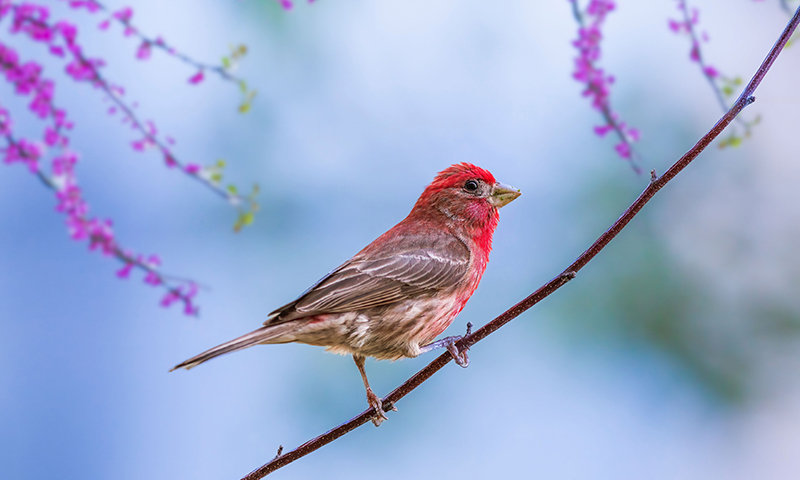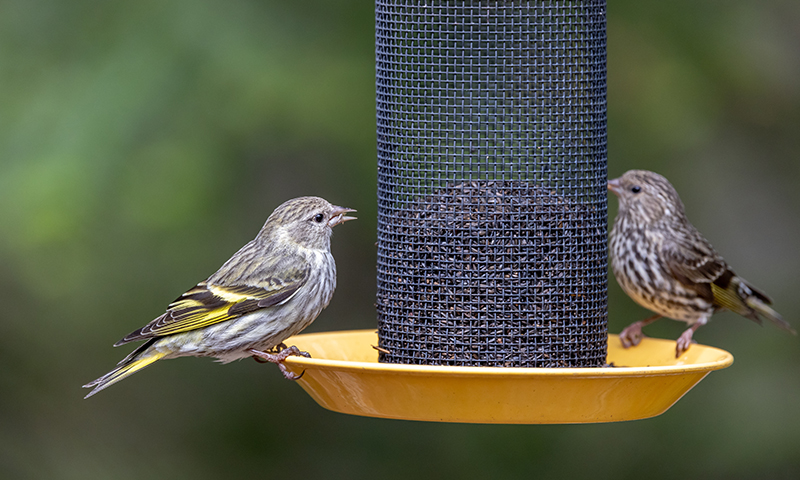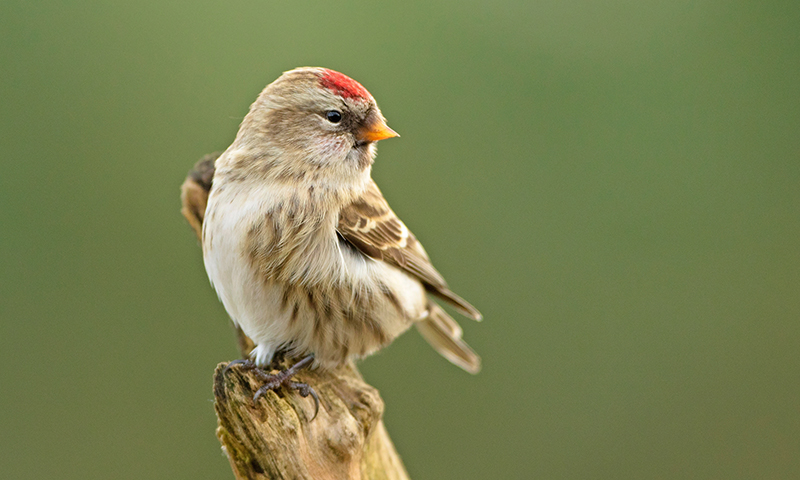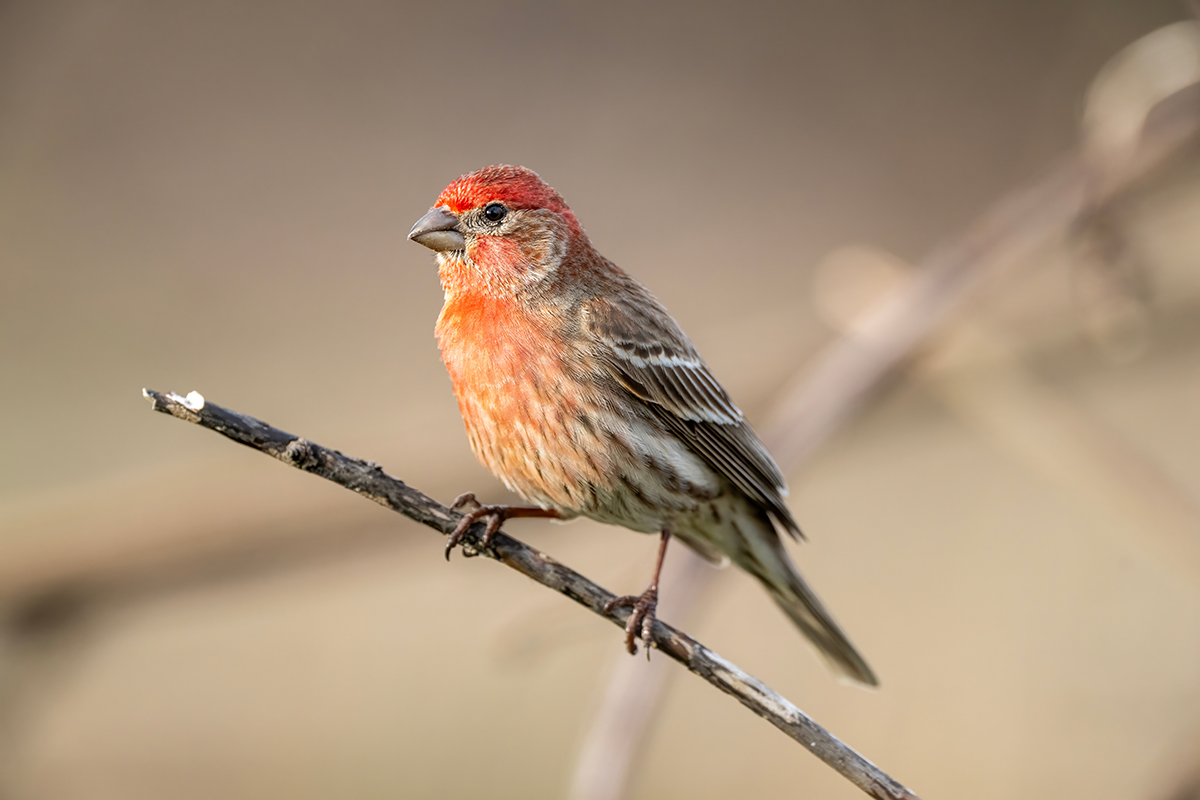All About Finches and How to Attract Them
Whether you've just started to pay attention to the birds in the trees or you're a birder with several nature walks under your belt, you've likely seen a finch. They're popular in North America, readily visit backyard feeders, and come in many varieties.
Interestingly, not all finches have the word "finch" in their name. Finches encompass a wide group of birds including grosbeaks, tanagers, buntings, siskins, crossbills, and more.
To learn more about wild finches, we chatted with professional conservationist and avian enthusiast Wesley Jolley. He serves as the Head of Operations for the US program at Island Conservation where he and his team work to restore nature on islands for both wildlife and people to enjoy.

17 species of finch call North America home.
How to Identify a Finch
In North America, you can spot 17 species of finches. Many of them have bright plumage, such as the American goldfinch with its vibrant lemon yellow and black markings. Then there's the male Summer tanager, a bold strawberry-red bird with hints of black on its wings.
Jolley says all finches fit into the small- to medium-sized songbird category with a compact body and often sport a short, triangular bill. He says using a book, an app, or birding websites can help you identify the wild birds you encounter.
"Some species look very unique, but many can be mistaken for each other. We birders often want to see something new and exciting, and that can lead us to misidentify birds," he explained. "One example from where I live in Oregon is the House finch and the Purple finch. House finches are much more common at my feeder, so if I can't get a good look to confirm it's a Purple finch, I know it's almost certainly a House finch."
As your bird-watching hobby grows, you may begin to notice a difference between male and female finches. The males usually have more colorful feathers, while the females are brown or mottled in color.
"If you successfully identify the males, there is a good chance the less colorful individuals nearby are females of the same species," Jolley added.
And what about singing? Well, as songbirds, each finch species has its own tune. You can browse Cornell University's All About Birds website to find the finch you'd like to hear, then click on the Listen button to enjoy a sampling of the beautiful music.

You'll find finches like the Purple finch in thick bushes or leafy trees.
Where to Find Finches in Nature
You can spot finches in parks and backyards around the globe. In North America, some species migrate, while others stay put year-round, even during winter months.
"Migration can take different forms too! Most people think of birds flying long distances south for the winter, but some species move around more locally," Jolley shared. "For example, some come down from the mountains in the winter to visit neighborhoods with better weather and plenty of feeders."
To spot a finch, Jolley says to pause and peek into thick bushes or leafy trees.
All finches need sources of food, water, cover, and a safe place to perch. He says backyard birders readily offer food and water, but often forget about cover (somewhere the bird can't easily be seen) and safety.
"Safety comes in many forms. Outdoor cats are one of the biggest threats to small birds and are responsible for killing millions of birds each year — so keep them inside, which is safer for the cat as well," Jolley explained.
He says windows are also a safety risk for finches. Placing reflective stickers on the glass and keeping feeders away from windows can help keep backyard birds safe.

Choose high-quality seed blends to attract a variety of birds to your yard.
How to Bring Finches to Your Backyard
In the wild, finches dine on seeds, bits of plants, and occasionally insects, which they often feed to their young.
Backyard finches enjoy eating from a hopper or house feeder that allows seeds to come out slowly as they get eaten. A platform feeder works well for species that prefer not to eat off the ground (for safety).
Jolley said most people choose seed mixes so different species of birds can pick out their favorite seeds.
"A high-quality seed will draw in more birds than a low-quality seed. If you see a whole bunch of uneaten seeds under your feeder, that's a good hint to look for a seed mix that has less of that type of seed," he educated.
Consider these seed mix options to attract finches:
-
Kaytee Wild Finch Blend: Finches (and other birds with small beaks) will enjoy seeing this mix in your bird feeder. It offers millet, Nyjer® seed, canary grass seed, flaxseed, and more. This blend works for year-round feeding of finches thanks to its high-fat, high-protein content that offers extra energy.
-
Kaytee Birders' Paradise Blend: This blend features sunflower seeds, millet, milo, peanuts, and more to nourish your feathered friends. Not only will finches enjoy this seed mix, you can also expect to see chickadees, doves, sparrows, and more visiting your bird feeder.
-
Kaytee No Mess Finch Bird Seed Blend: It's no secret that finches adore Nyjer® seed and hulled sunflower chips, so this blend offers an abundance of both. Without extra seeds in the mix, you have less mess (discarded seed hulls) on the ground under your feeder, and your finches get to indulge in their favorite foods.
-
Kaytee Ultra Wild Finch Blend: This custom mix features the top four foods finches crave to help bring them to your feeder for your viewing pleasure. So, what are they? Tasty Nyjer® seed, red millet, hulled sunflower chips, and peanut hearts. Delicious!
"Goldfinches and Pine siskins like to eat Nyjer® seeds, which are a small, dark, oily seed that is high in nutrients. Niger seed usually goes into specialty feeders that are cylindrical in shape and are either made of a fine screen or have small, dedicated holes where birds can grab the seeds," Jolley shared. If you don't have one of these feeders in your birding station, you can hang a Kaytee Nyjer® Bar on a shepherd's hook or fence.
Finches also enjoy meals in the form of suet cakes made of fat, seeds, berries, and/or dried bugs and worms.
"This is great for birds in winter. I wouldn't consider suet something that specifically attracts finches, but they will eat it especially in winter," he added. "Still, a suet feeder makes a great addition to a backyard bird setup."
Try one of these suet cakes in your backyard:
-
Kaytee Nut & Fruit Bounty Suet Dough: This cake features beef suet, roasted peanuts, corn, oats, and several fruit flavorings. The dough won't melt in warm weather, making it a year-round treat for your feathery visitors.
-
Kaytee Orange Harvest Suet Dough: Slip this suet cake into your suet feeder to treat your finches to an orange-flavored treat filled with roasted peanuts, corn, papaya, and more.
-
Kaytee Songbird Seed Cake with Mealworms: Although this isn't a suet-based cake, this cake will slide right into your suet cake feeder. It features mealworms, canary grass seed, peanut pieces, and more to tempt finches.
Finally, keep your feeding station tidy.
"It's important to keep your bird seed fresh and water clean so you don't accidentally make birds sick," Jolley advises.
A routine washing and scrubbing of your bird bath and bird feeders every few weeks will keep algae, mold, and dirt away. Of course, you can clean them more often, too, especially if you've had rainy or warm weather.

Finches, in all their varieties, are a great addition to your bird-watching adventure.
Finches Are Simply Amazing
Whether you're attracted to their colorful feathers or their sweet songs, finches deserve a second look at your backyard feeder.
Jolley reminds us to appreciate the common species.
"The birds we see every day become 'normal' for us, and we can forget just how incredible they are. House finches are probably the most common finches on feeders in North America, and although they are colorful, they're not as striking as some of the other species like goldfinches or grosbeaks," he shared. "However, if you look closely and watch their behavior, you'll see they are every bit as beautiful and interesting as some of their less common cousins."
Learn more about the benefits of spending time outside with your feathered friends in How to Improve Your Mental Wellness with Birdwatching.
